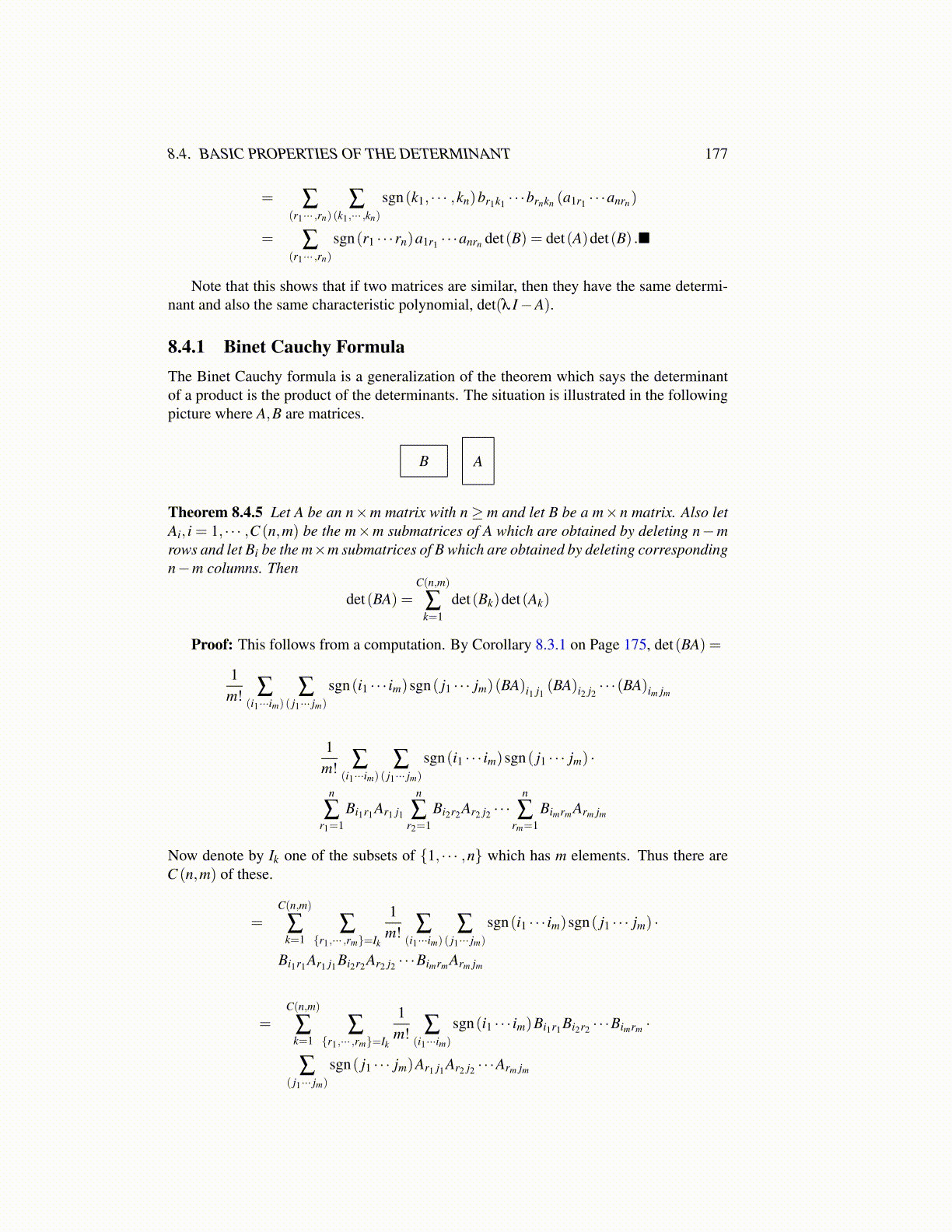
8.4. BASIC PROPERTIES OF THE DETERMINANT 177
= ∑(r1··· ,rn)
∑(k1,··· ,kn)
sgn(k1, · · · ,kn)br1k1 · · ·brnkn (a1r1 · · ·anrn)
= ∑(r1··· ,rn)
sgn(r1 · · ·rn)a1r1 · · ·anrn det(B) = det(A)det(B) .■
Note that this shows that if two matrices are similar, then they have the same determi-nant and also the same characteristic polynomial, det(λ I−A).
8.4.1 Binet Cauchy FormulaThe Binet Cauchy formula is a generalization of the theorem which says the determinantof a product is the product of the determinants. The situation is illustrated in the followingpicture where A,B are matrices.
B A
Theorem 8.4.5 Let A be an n×m matrix with n≥ m and let B be a m×n matrix. Also letAi, i = 1, · · · ,C (n,m) be the m×m submatrices of A which are obtained by deleting n−mrows and let Bi be the m×m submatrices of B which are obtained by deleting correspondingn−m columns. Then
det(BA) =C(n,m)
∑k=1
det(Bk)det(Ak)
Proof: This follows from a computation. By Corollary 8.3.1 on Page 175, det(BA) =
1m! ∑
(i1···im)∑
( j1··· jm)sgn(i1 · · · im)sgn( j1 · · · jm)(BA)i1 j1 (BA)i2 j2 · · ·(BA)im jm
1m! ∑
(i1···im)∑
( j1··· jm)sgn(i1 · · · im)sgn( j1 · · · jm) ·
n
∑r1=1
Bi1r1Ar1 j1
n
∑r2=1
Bi2r2 Ar2 j2 · · ·n
∑rm=1
BimrmArm jm
Now denote by Ik one of the subsets of {1, · · · ,n} which has m elements. Thus there areC (n,m) of these.
=C(n,m)
∑k=1
∑{r1,··· ,rm}=Ik
1m! ∑
(i1···im)∑
( j1··· jm)sgn(i1 · · · im)sgn( j1 · · · jm) ·
Bi1r1 Ar1 j1Bi2r2Ar2 j2 · · ·BimrmArm jm
=C(n,m)
∑k=1
∑{r1,··· ,rm}=Ik
1m! ∑
(i1···im)sgn(i1 · · · im)Bi1r1 Bi2r2 · · ·Bimrm ·
∑( j1··· jm)
sgn( j1 · · · jm)Ar1 j1Ar2 j2 · · ·Arm jm